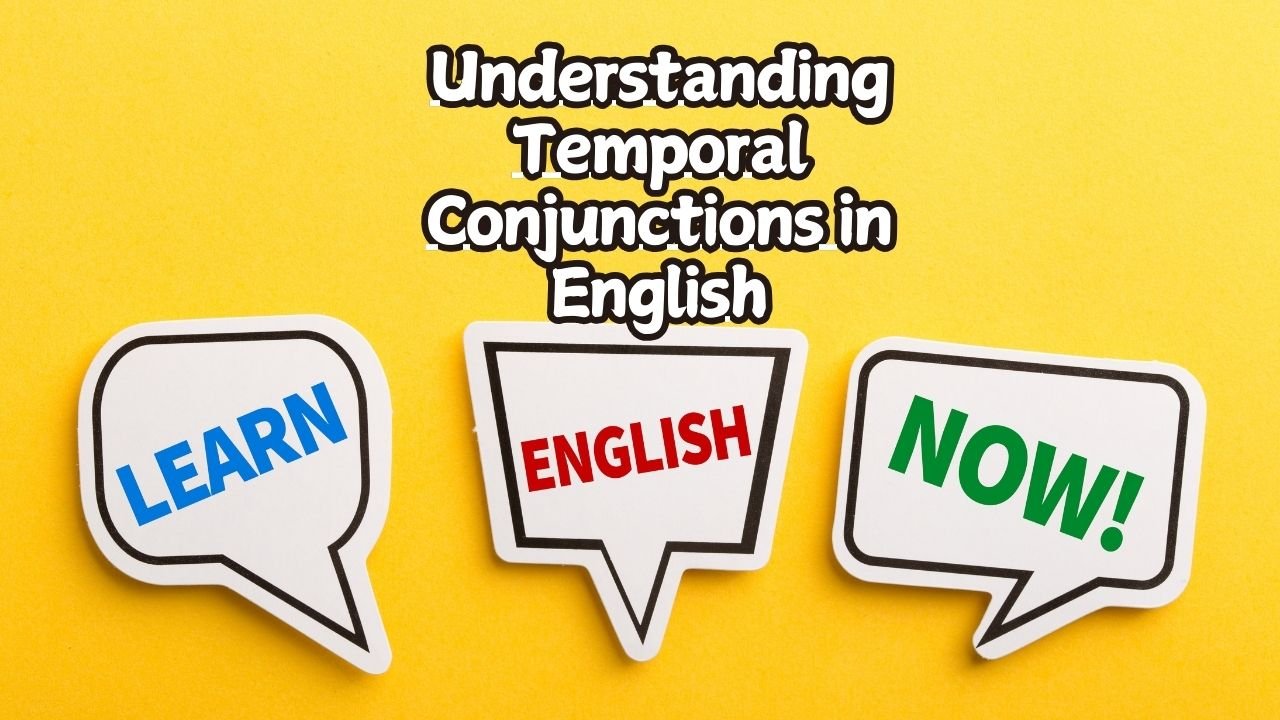Understanding Temporal Conjunctions in English
In English grammar, conjunctions are words that connect clauses, phrases, or words. One specific type of conjunction is the temporal conjunction, which helps indicate time relationships between different parts of a sentence. These conjunctions show when an action happens in relation to another action.
Temporal conjunctions are used to link two clauses by showing time-based relationships. They help answer the questions when, how long, or how often an event occurs.
a. Common Temporal Conjunctions
Here are some commonly used temporal conjunctions:
- Before – indicates that one event happens earlier than another.
- After – shows that one event follows another.
- When – specifies the time something happens.
- While – shows that two events happen at the same time.
- Until – indicates that an event continues up to a certain point.
- As soon as – means immediately after another action.
- Since – refers to a point in the past when something started.
- Once – means after something happens.
- By the time – refers to a deadline or a specific moment before something happens.
b. Examples of Temporal Conjunctions in Sentences
- Before I go to bed, I always brush my teeth.
- We will start the meeting after John arrives.
- Call me when you get home.
- She was reading a book while waiting for the bus.
- You cannot leave until you finish your homework.
- I will call you as soon as I arrive at the airport.
- She has been studying here since last year.
- Once you understand the concept, it becomes easy.
- By the time we reached the station, the train had already left.
c. How to Use Temporal Conjunctions Correctly
- Placement of Temporal Conjunctions:A temporal conjunction can appear at the beginning or in the middle of a sentence.
If it appears at the beginning, use a comma to separate the clauses.
Example: Before you go to bed, turn off the lights.
If it appears in the middle, no comma is needed.
Example: Turn off the lights before you go to bed. - Using Correct Verb Tenses:The verb tenses in the clauses must match the time relationship.
Example: She had left before I arrived. (Past perfect + past simple)
Example: I will call you as soon as I arrive. (Future + present simple) - Avoiding Common Mistakes:Do not use future tense after conjunctions like “when,” “before,” or “after” in time clauses.
Incorrect: I will call you when I will arrive.
Correct: I will call you when I arrive.
d. Conclusion
Temporal conjunctions are essential in English because they help clarify the timing of events in a sentence. By understanding and using them correctly, you can improve your writing and speaking skills. Keep practicing, and soon, using temporal conjunctions will become second nature!
e. Practice Exercises
Choose the correct temporal conjunction!

4 responses to “Understanding Temporal Conjunctions in English”
I have been exploring for a bit for any high quality articles or weblog posts in this kind of area . Exploring in Yahoo I finally stumbled upon this site. Reading this info So i am glad to express that I have an incredibly just right uncanny feeling I found out just what I needed. I most indisputably will make certain to do not fail to remember this website and give it a glance on a constant basis.
Hey would you mind sharing which blog platform you’re working with? I’m looking to start my own blog in the near future but I’m having a hard time selecting between BlogEngine/Wordpress/B2evolution and Drupal. The reason I ask is because your design and style seems different then most blogs and I’m looking for something completely unique. P.S My apologies for being off-topic but I had to ask!
Premium attention to detail, maintains our investment property value. Setting the luxury standard. Luxury living perfected.
Its wonderful as your other content : D, thankyou for posting. “The rewards for those who persevere far exceed the pain that must precede the victory.” by Ted W. Engstrom.